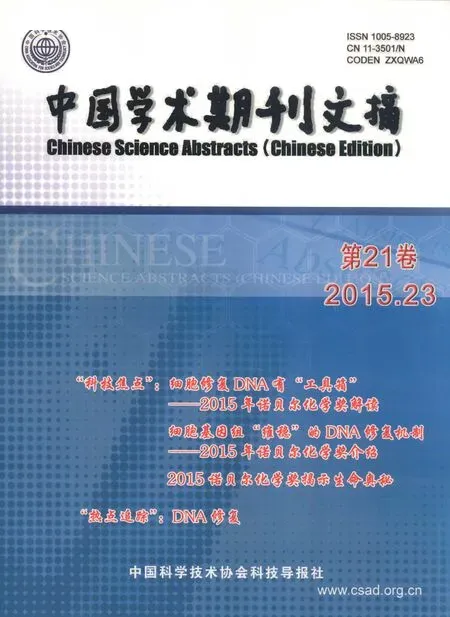地质学
地质学

来源出版物:Science China: Earth Sciences, 2015, 58(9): 1523-1537联系邮箱:ZHU Ri-xiang, rxzhu@mail.iggcas.ac.cn

板块构造对海相钾盐矿床分布与成矿模式的控制
刘成林,赵艳军,方小敏,等
表生钾盐矿床主要沉积于陆壳板块上的陆表海盆地中,其沉积受制于全球板块运动,具体影响表现在板块的规模、边界特征、漂移历史与古纬度、古气候等的控制作用。在巨型稳定克拉通上,出现巨型陆表海盆,沉积分布广、厚度大的巨型钾盐矿床或矿集区,矿床沉积类型属于化学岩型即碳酸盐岩型钾盐矿;板块汇聚区域,如特提斯造山带,出现较多的小陆块并形成较小规模的海相及海陆交互相盆地,也形成了一些厚度大的巨型-超大型钾盐矿床或矿床群,沉积类型有化学岩型及碎屑岩型钾矿两类;而大陆板块边缘及其内部,出现裂谷盆地成钾,沉积环境可以从海相到非海相及过渡类型,钾盐沉积规模不等,也可出现超大型矿床,基本属于碎屑岩型钾矿;最后,在大陆板块内部出现典型陆相钾盐沉积。从时代上看,稳定巨型克拉通板块成钾,主要出现于古生代;而板块汇聚时期成钾,主要发生在中生代;裂谷成钾则主要出现在新生代,典型陆相钾盐矿床则出现在第四纪。由此可见,从古生代到新生代,地球表生成钾模式发生了重大转换。从成钾物质来源看,稳定克拉通海盆主要以海水补给为主,特提斯小陆块的海相盆地成钾物质,以海水补给为主,可能存在非海相(以火山活动带来深部物质等)的补给;而裂谷成钾物质补给,则是海相与非海相混合型,甚至一些盆地以非海相物质补给为主。从古生代到中生代,再到新生代,成钾盆地规模快速变小;所形成的钾盐资源量也呈相应递减变化规律。中国小陆块的漂移演化历史受控于全球主要板块的构造演化,其海相盆地成钾作用也应符合世界主要钾盐成矿的基本规律,因此,掌握全球板块对钾盐成矿基本约束规律,有助于研究中国小陆块海相成钾规律,指导中国海相找钾勘查突破。
板块运动;小陆块;海相;钾盐矿床;成矿模式
来源出版物:地质学报, 2015, 89(11): 1893-1907联系邮箱:刘成林,liuchengl@263.net
Decratonic gold deposits
ZHU Ri-xiang, FAN Hong-rui, LI Jian-wei, et al.
The North China Craton (NCC) hosts numerous gold deposits and is known as the most gold-productive region of China. The gold deposits were mostly formed within a few million years in the Early Cretaceous (130-120 Ma), coeval with widespread occurrences of bimodal magmatism, rift basins and metamorphic core complexes that marked the peak of lithospheric thinning and destruction of the NCC. Stable isotope data and geological evidence indicate that ore-forming fluids and other components were largely exsolved from cooling magma and/or derived from mantle degassing during the period of lithospheric extension. Gold mineralization in the NCC contrasts strikingly with that of other cratons where gold ore-forming fluids were sourced mostly from metamorphic devolatization in compressional or transpressional regimes. In this paper, we present a summary and discussion on time-space distribution and ore genesis of gold deposits in the NCC in the context of the timing, spatial variation, and decratonic processes. Compared with orogenic gold deposits in other cratonic blocks, the Early Cretaceous gold deposits in the NCC are quite distinct in that they were deposited from magma-derived fluids under extensional settings and associated closely with destruction of cratonic lithosphere. We argue that Early Cretaceous gold deposits in the NCC cannot be classified as orogenic gold deposits as previously suggested, rather, they are a new type of gold deposits, termed as “decratonic gold deposits” in this study. The westward subduction of the paleo-West Pacific plate (the Izanagi plate) beneath the eastern China continent gave rise to an optimal tectonic setting for large-scale gold mineralization in the Early Cretaceous. Dehydration of the subducted and stagnant slab in the mantle transition zone led to continuous hydration and considerable metasomatism of the mantle wedge beneath the NCC. As a consequence, the refractory mantle became oxidized and highly enriched in large ion lithophile elements and chalcophile elements (e.g., Cu, Au, Ag and Te). Partial melting of such a mantle would have produced voluminous hydrous, Au-and S-bearing basaltic magma, which, together with crust-derived melts induced by underplating of basaltic magma, served as an important source for ore-forming fluids. It is suggested that the Eocene Carlin-type gold deposits in Nevada, occurring geologically in the deformed western margin of the North America Craton, are comparable with the Early Cretaceous gold depo-sits of the NCC because they share similar tectonic settings and auriferous fluids. The NCC gold deposits are characterized by gold-bearing quartz veins in the Archean amphibolite facies rocks, whereas the Nevada gold deposits are featured by fine-grained sulfide dissemination in Paleozoic marine sedimentary rocks. Their main differences in gold mineralization are the different host rocks, ore-controlling structures, and ore-forming depth. The similar tectonic setting and ore-forming fluid source, however, indicate that the Carlin-type gold deposits in Nevada are actually analogous to decratonic gold deposits in the NCC. Gold deposits in both the NCC and Nevada were formed in a relatively short time interval (<10 Myr) and become progressively younger toward the subduction zone. Younging of gold mineralization toward subductionzone might have been attributed to retreat of subduction zone and rollback of subducted slab. According to the ages of gold deposits on inland and marginal zones, the retreat rates of the Izanagi plate in the western Pacific in the Early Cretaceous and the Farallon plate of the eastern Pacific in the Eocene are estimated at 8.8 cm/yr and 3.3 cm/yr, respectively.
Early Cretaceous; craton destruction; decratonic gold deposit; ore deposit model

